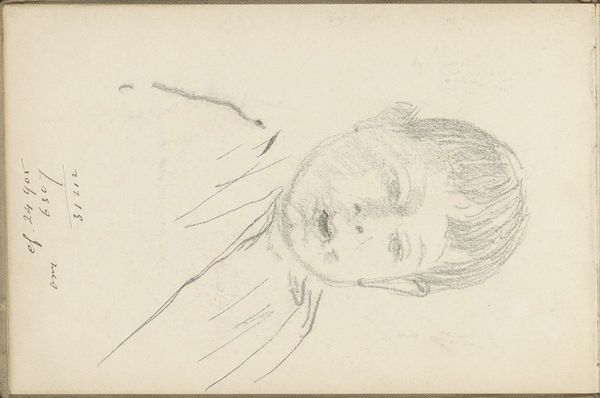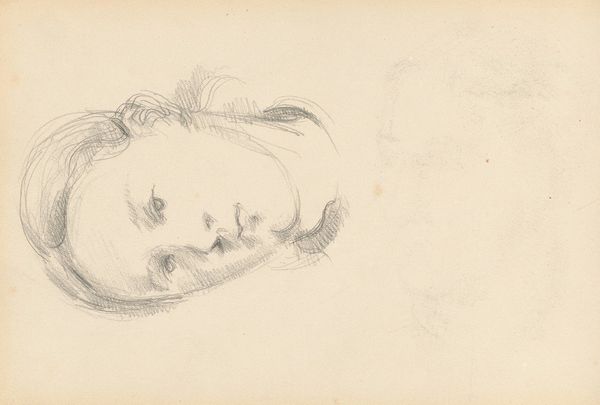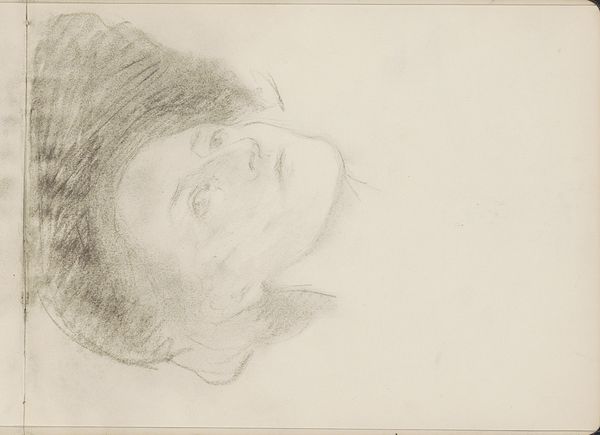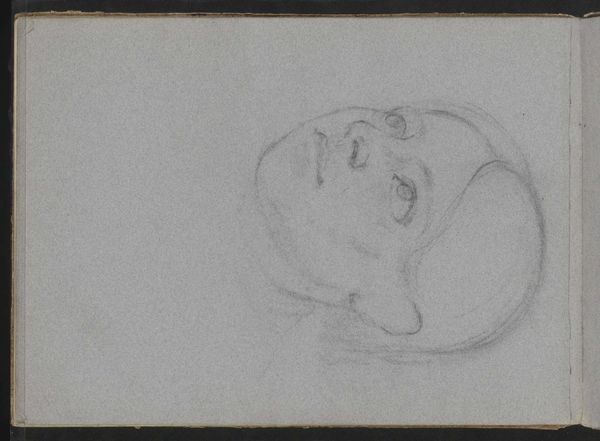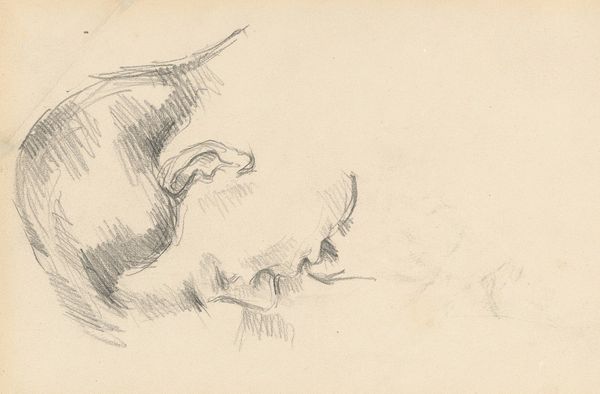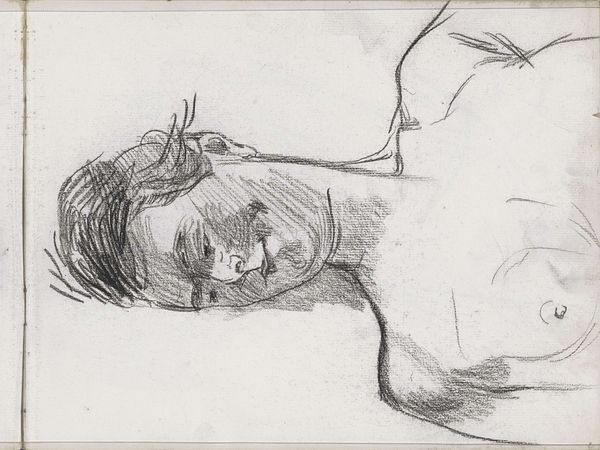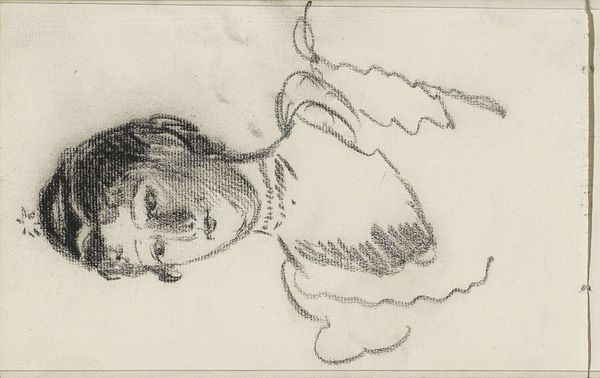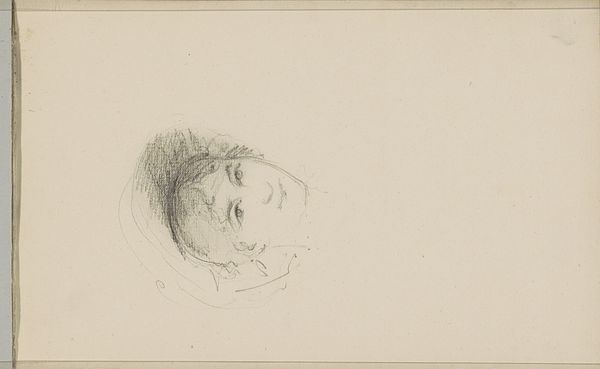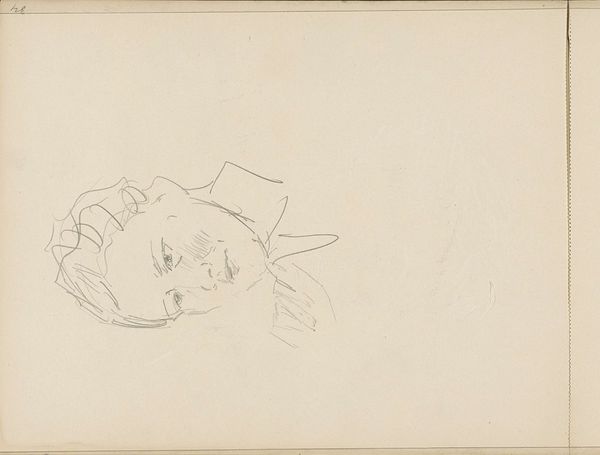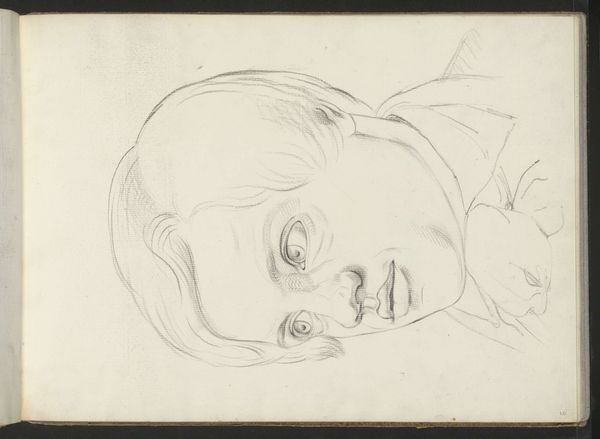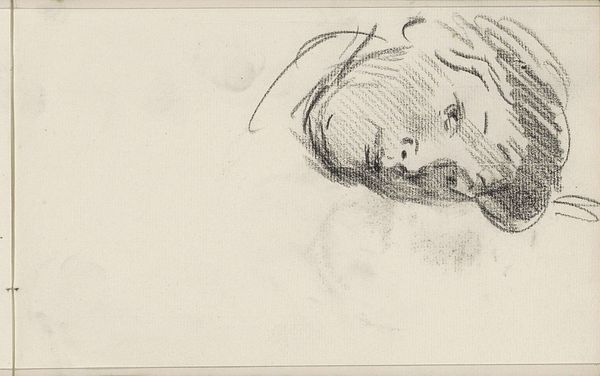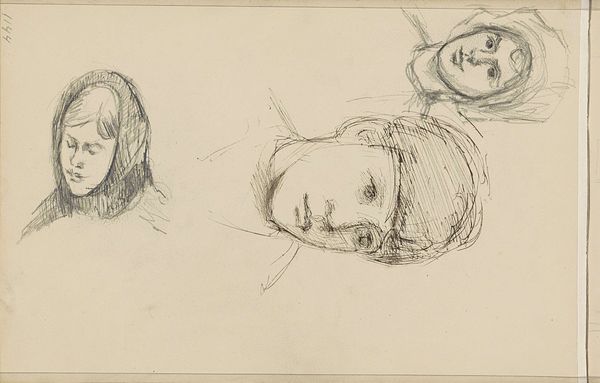
drawing, pencil
#
portrait
#
drawing
#
pencil drawing
#
pencil
#
portrait drawing
#
academic-art
Copyright: Public Domain: Artvee
Editor: So, this is Cézanne’s "Study of Desiderio da Settignano’s ‘Bust of a Child’," dating to around 1895. It’s a pencil drawing, quite simple, but I find it mesmerizing how he captures form with such economy of line. What do you make of it? Curator: For me, this piece highlights the significance of artistic labor. Cézanne's study, a copy of another artist’s work, is a crucial exercise rooted in academic tradition. It brings forward questions of artistic production: what labor went into the original sculpture, how does Cézanne engage with it through his labor of drawing, and how does this reproductive process affect the art market? Editor: That’s interesting. I was mainly focused on the aesthetic qualities of the drawing itself. Are you suggesting we should focus more on how art is made rather than what it represents? Curator: Exactly! By focusing on the materiality of the artwork - the pencil, the paper, the act of drawing itself - we start to consider art as the product of human labor and skill, made within very specific economic and social conditions. Editor: So the value isn’t just in the image, but in the process, the artist's skill, and the resources required to create it. Curator: Precisely. Think about the mining of graphite for the pencil, the production of paper. What were the factory conditions like? By tracing these materials, we expose the larger networks that sustain artistic creation. Editor: I hadn't considered the implications of those material networks. This has definitely broadened my perspective on how to appreciate art! Curator: Hopefully, next time, you'll not just consider art a finished object but also how materials, labor and social context play key roles in how we define “Art.”
Comments
No comments
Be the first to comment and join the conversation on the ultimate creative platform.
